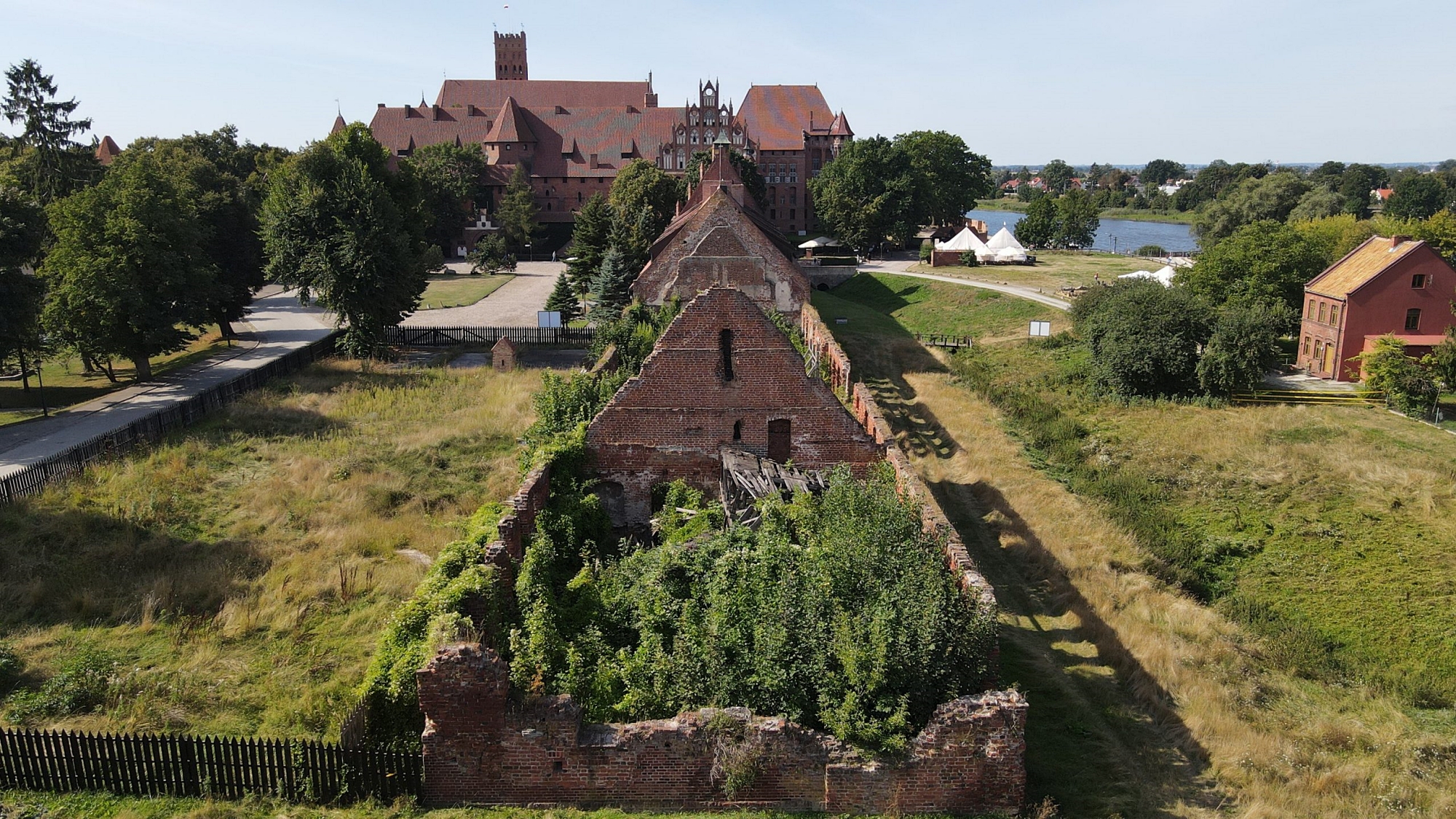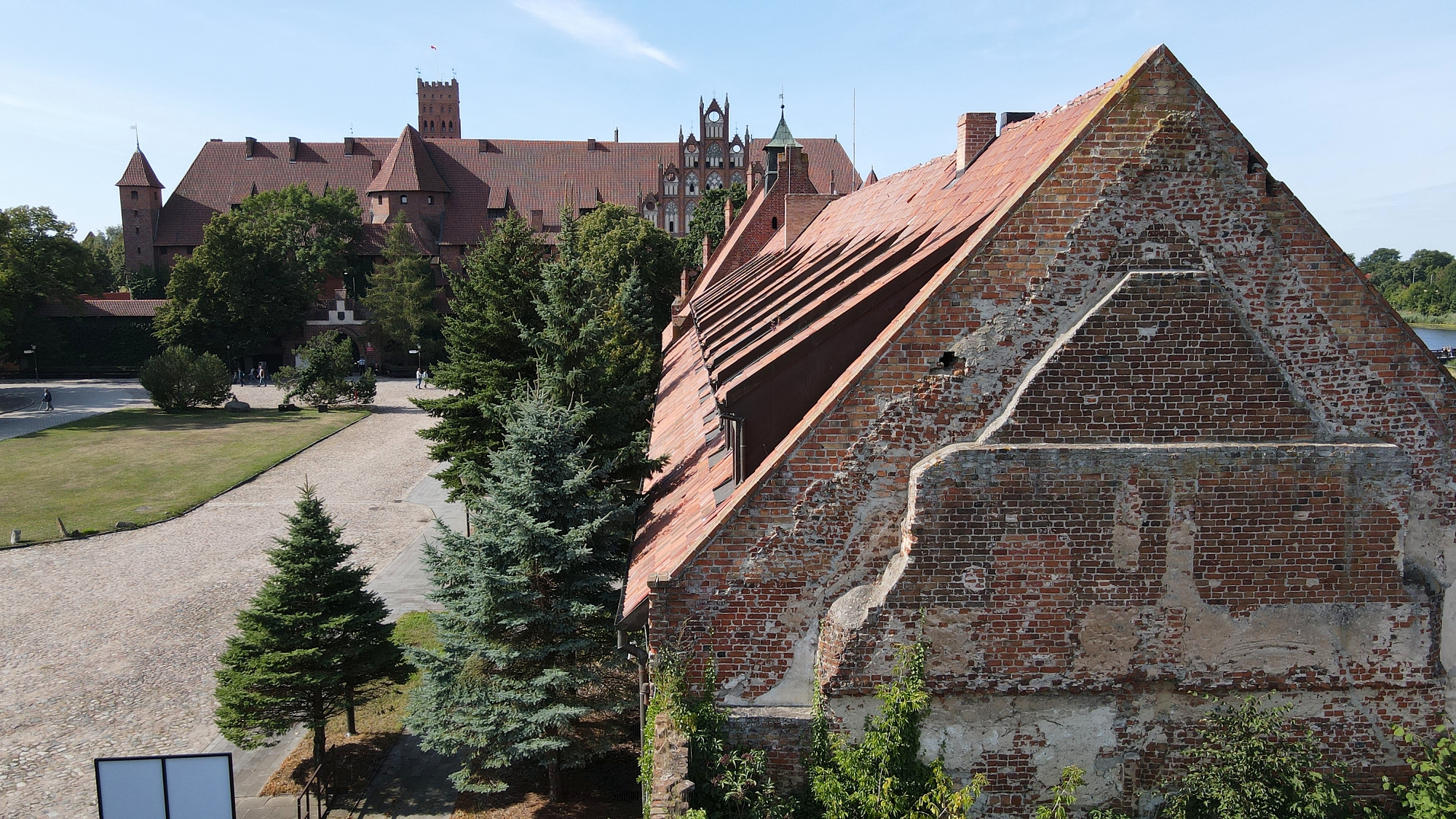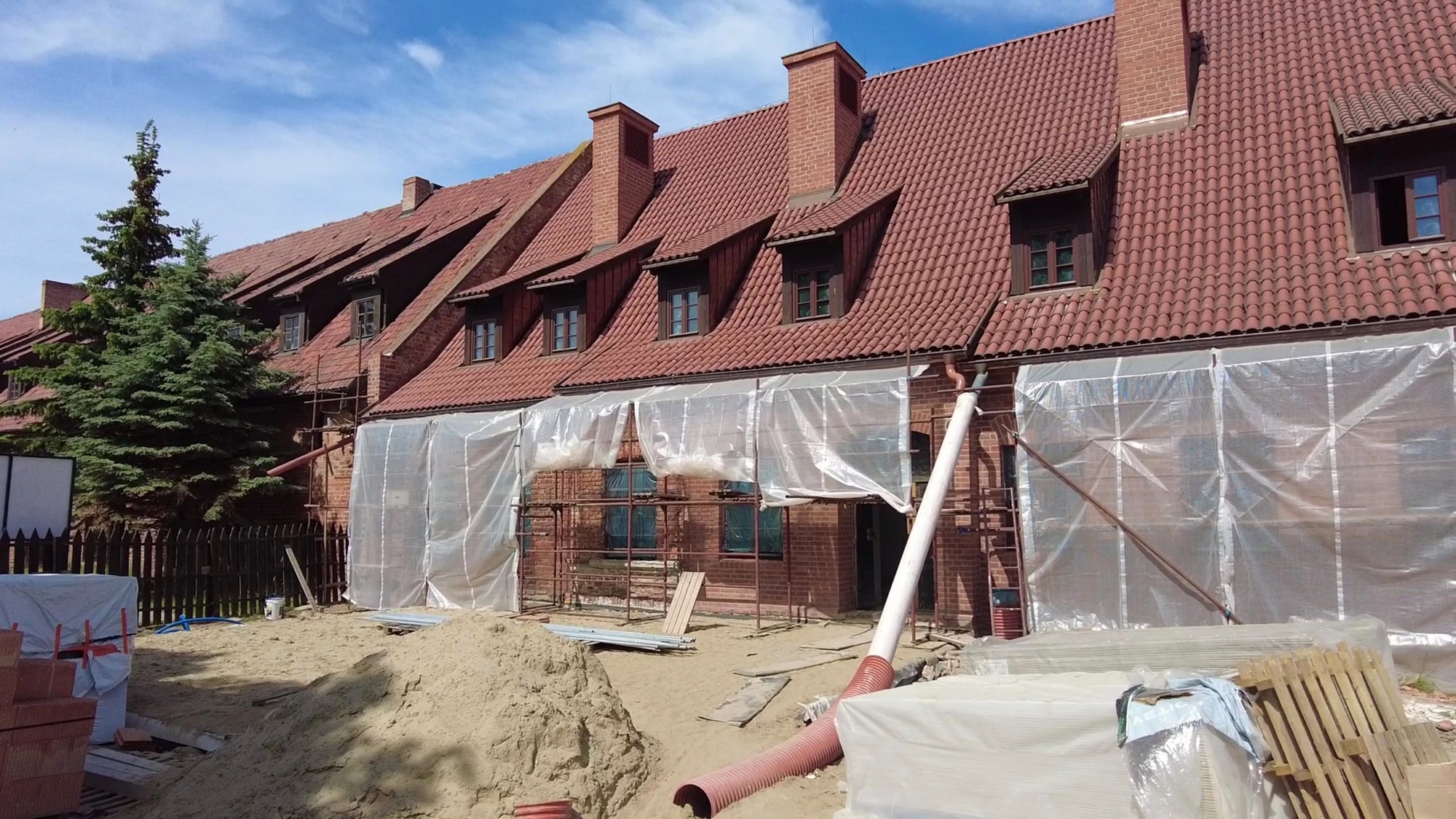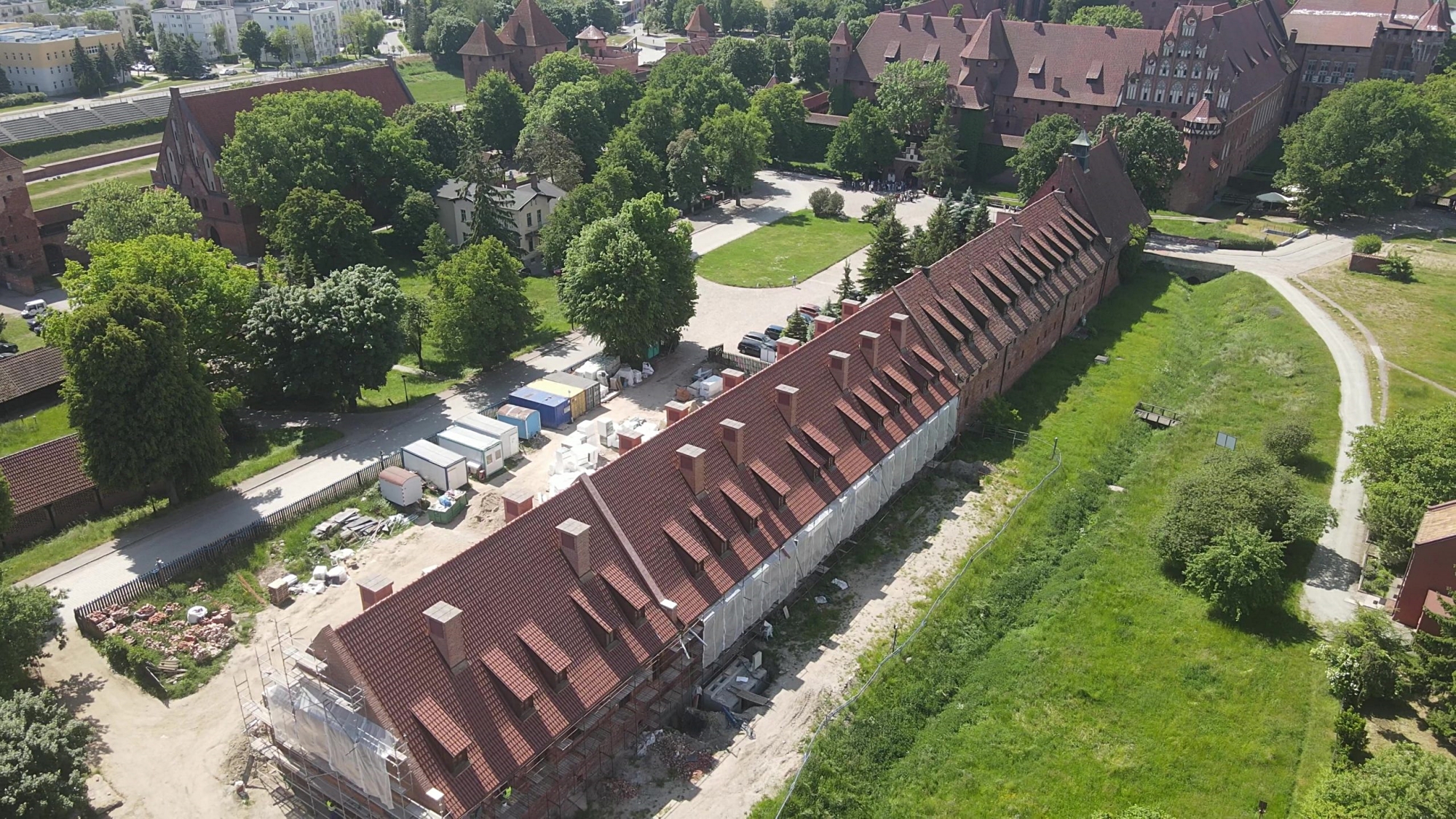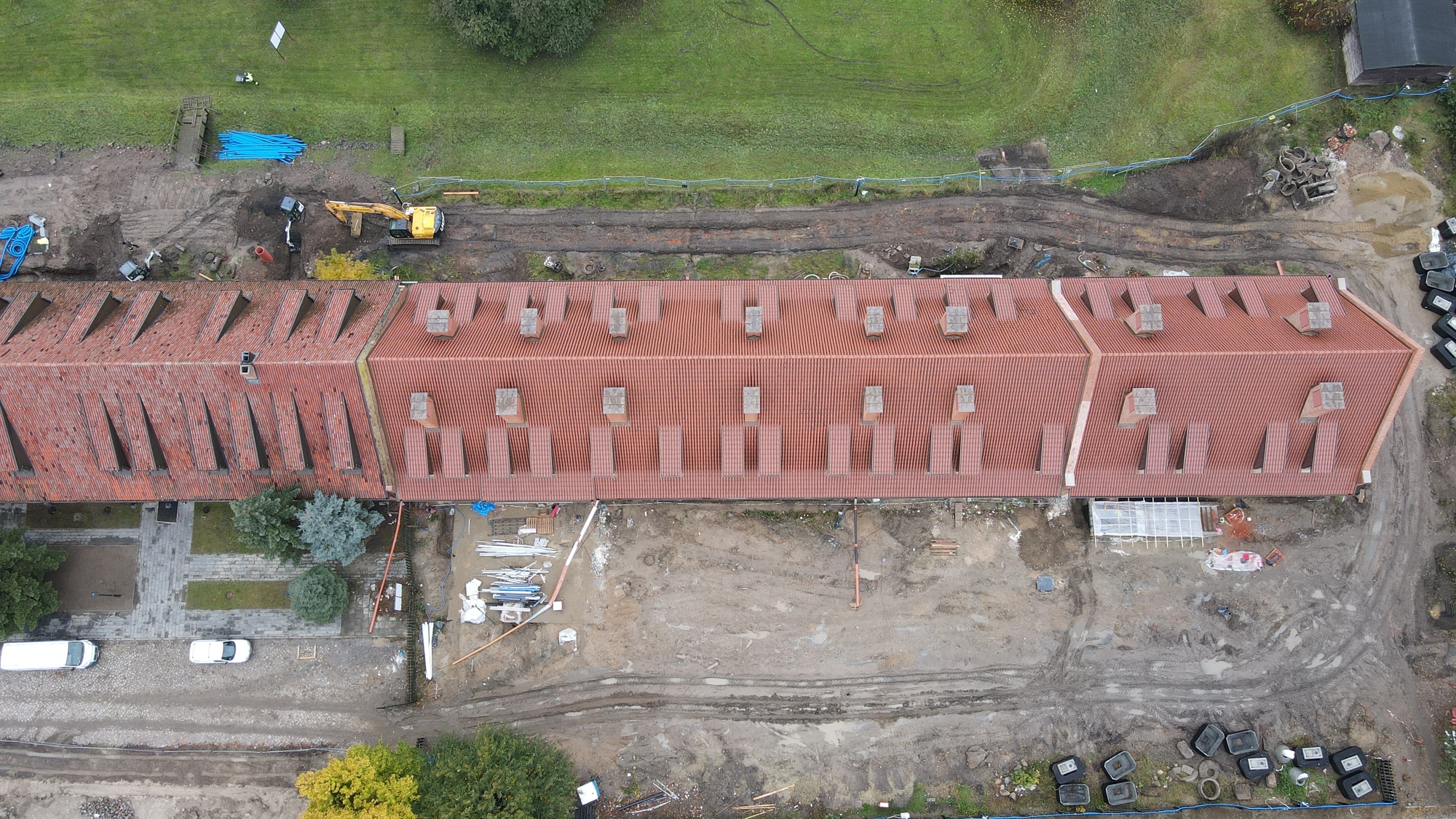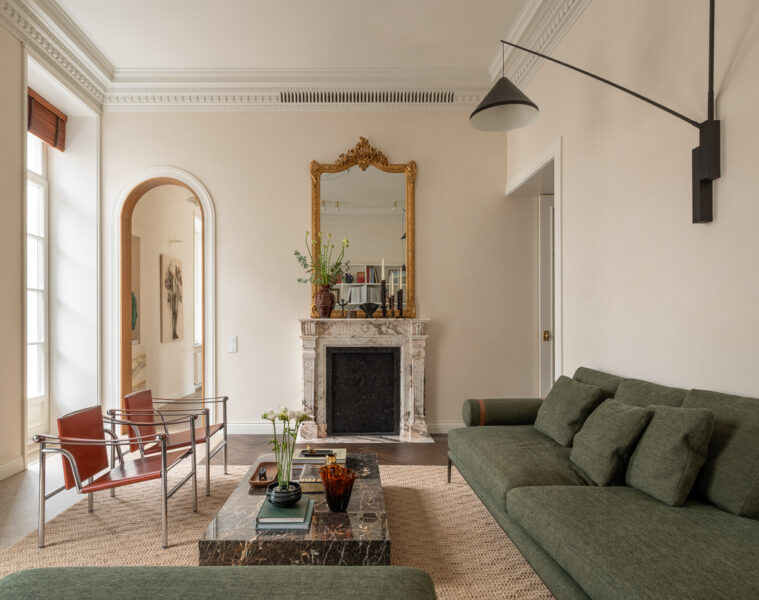In the vicinity of the world’s largest Gothic castle complex, Malbork Castle, advanced construction and conservation work has recently been completed. As part of these, two outbuildings dating from the Middle Ages were rebuilt. The buildings were destroyed by the Red Army in 1945. The investment is still ongoing, as the buildings still need to be fitted out and removals made. The official opening is expected to take place this spring. Raised from the rubble, the monuments will serve museum workers, local residents and tourists.
Malbork Castle (German: Ordensburg Marienburg) was built in several stages from 1280 to the mid-15th century by the Teutonic Order. From 1309, it was the seat of the Grand Masters of the Teutonic Order and the authorities of Teutonic Prussia. In 1772, it was occupied by the administration of the Kingdom of Prussia and devastated. Extensive restoration work was carried out in the years 1817-1842 and 1882-1944. One year later came the great catastrophe, which destroyed the efforts of conservators and architects painstakingly striving for the full restoration of the castle complex. In 1944, a decision of the German military authorities made Malbork a fortress, and thus the castle a prime target for the advancing Red Army. As a result of these actions, the historic complex was severely damaged. In the northern bailey, artillery fire turned the outbuildings, only a few years earlier restored to their historical shape, into ruins. Reconstruction of the Gothic complex took place at the end of the 1940s, but in fact continues to this day.
The destroyed castle in 1945. Photo by Hajotthu, CC BY-SA 3.0, via Wikimedia Commons
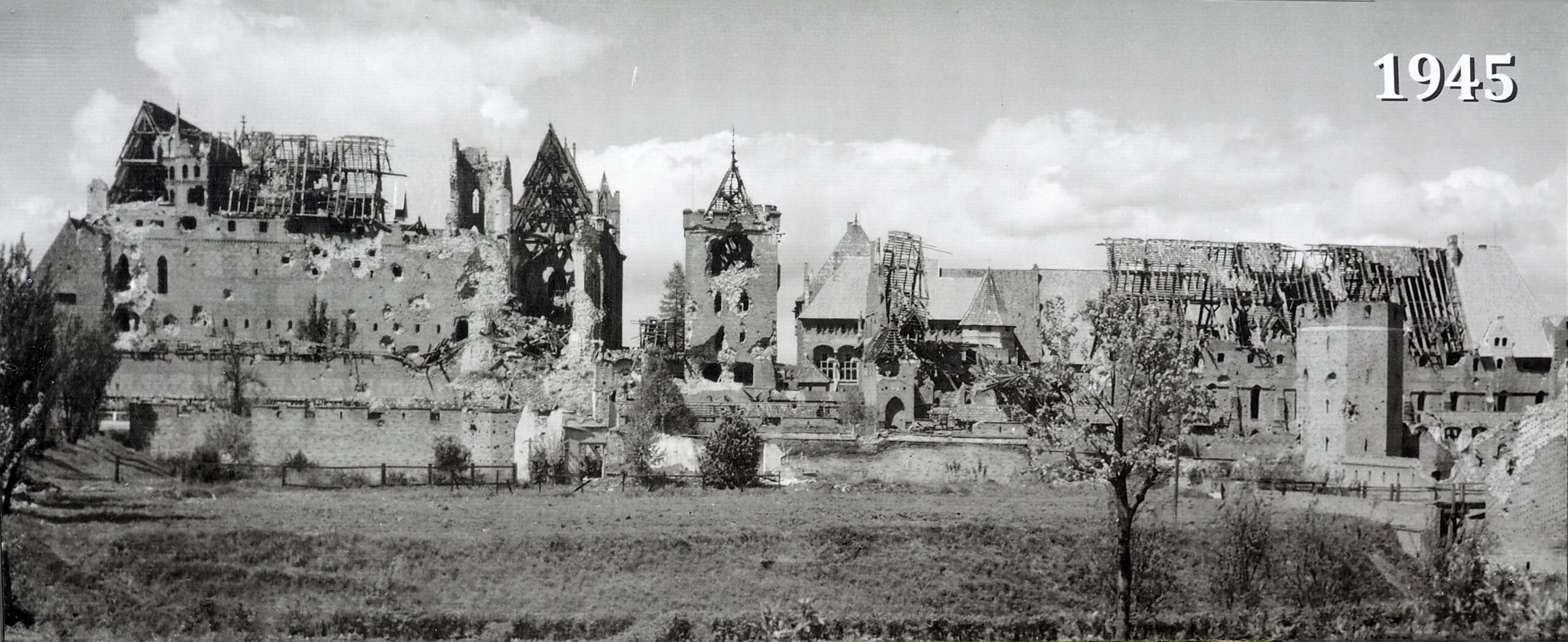
Until recently, the farm buildings were among the last vestiges of wartime destruction on the approximately 20-hectare site of the castle complex. Provisionally secured, the medieval walls had been waiting for their moment for almost 80 years. The restoration of the buildings and their new functions was made possible thanks to funding the Malbork institution obtained from Norwegian funds and the budget of the Ministry of Culture and National Heritage. The construction and conservation work, which lasted two years, was completed at the end of 2023.
The buildings before and after reconstruction. Photo: Google Maps and Malbork Castle Museum
Before work began, the relics of the buildings presented a depressing picture. All that remained of them were fragments of the perimeter walls and the remnants of the Gothic cellar, overgrown with wild vegetation. One of the many surprises was the discovery of a furnace connected to a system of heating ducts located in the ground floor, dating from the late 14th century or the 15th century. This necessitated a redesign of the functional layout. In turn, the disaster of the preserved gable required new structural solutions. As part of the project, the massing of the historic buildings was rebuilt, preserving the medieval wall relics. Inside, an independent, contemporary reinforced concrete structure was created, which connects the relics of the historic walls to the new part. The usable area of the premises is 2,500 square metres. In the reconstructed buildings, the scientific and research facilities of the Castle Museum are being created.
Outbuildings before and after reconstruction. Photo: Malbork Castle Museum
This major technical challenge was tackled by BUDKON Sp. z o.o. from Gdańsk. The cost of the construction works was just under PLN 21.5 million net, of which around PLN 12 million was a grant from the European Economic Area Financial Mechanism, and around PLN 1 million was covered by the Ministry of Culture and National Heritage. The value of the entire project is approximately PLN 26 million. The museum plans to be in time to move and equip the facilities before 1 May 2024.
The restoration of Malbork Castle has been underway for 200 years. The museum has plans for further investments. The application submitted to the European Funds for Infrastructure, Climate, Environment 2021-2027 (FEnIKS) programme is currently in the formal assessment phase.
Source: zamek.malbork.pl, malbork.naszemiasto.pl
Read also: Architecture in Poland | Metamorphosis | Museum | Monument | History | Brick
Subject: Malbork Castle: reconstruction of medieval buildings







